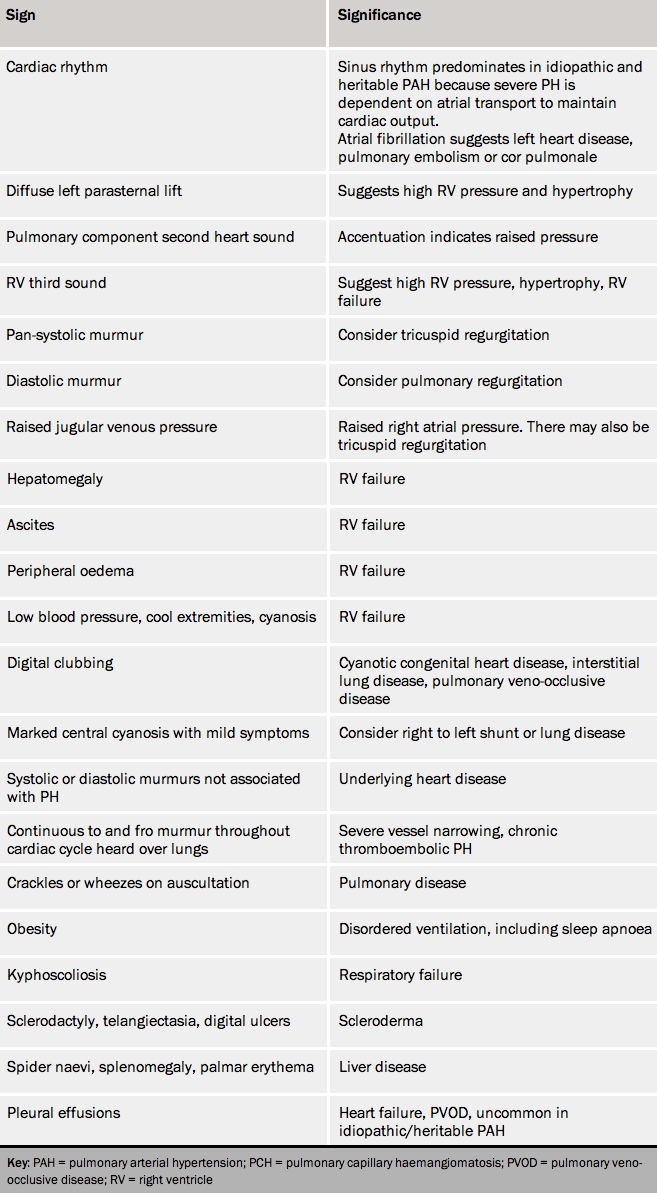Clinical presentation of pulmonary hypertension in adults
Patients with severe pulmonary hypertension (PH) may look entirely well at rest. This can lead to their complaints, and the severity of their illness, being discounted.
History
A thorough history, to include questions related to the causes of PH (see module 1 of this programme) should be taken. To elucidate a family history, it is necessary to go back two generations and sometimes to obtain death certificates. Additionally, the patient should be questioned specifically for symptoms of possible causes of PH, such as connective tissue diseases (CTDs) and anorexigen intake.
Symptoms
The main symptoms of PH are non-specific, and in all but the most severe cases are precipitated by exercise. They include:
- breathlessness
- angina pectoris
- syncope
- fatigue
- weakness
- dry cough
- palpitations, and
- exercise-induced nausea and vomiting.
If heart failure supervenes, patients may complain of abdominal distension and ankle swelling. Sometimes a patient with a low cardiac output state may present with diarrhoea and vomiting associated with deranged renal and liver function tests. Symptoms are progressive although they may vary from day to day, as in all chronic conditions. Marked spontaneous improvement of severe symptoms is unlikely to be caused by PH and is more likely to indicate heart failure or lung disease.
Physical examination
Physical signs are subtle and are often missed. Common symptoms are detailed in table 1: the physician is looking for signs that indicate the presence of pulmonary hypertension, its severity, and signs that may indicate the cause of PH such as CTD, congenital heart disease, interstitial lung disease or liver disease.

Learning point
- Symptoms of PH are non-specific and physical signs may be subtle: a high index of suspicion is needed
